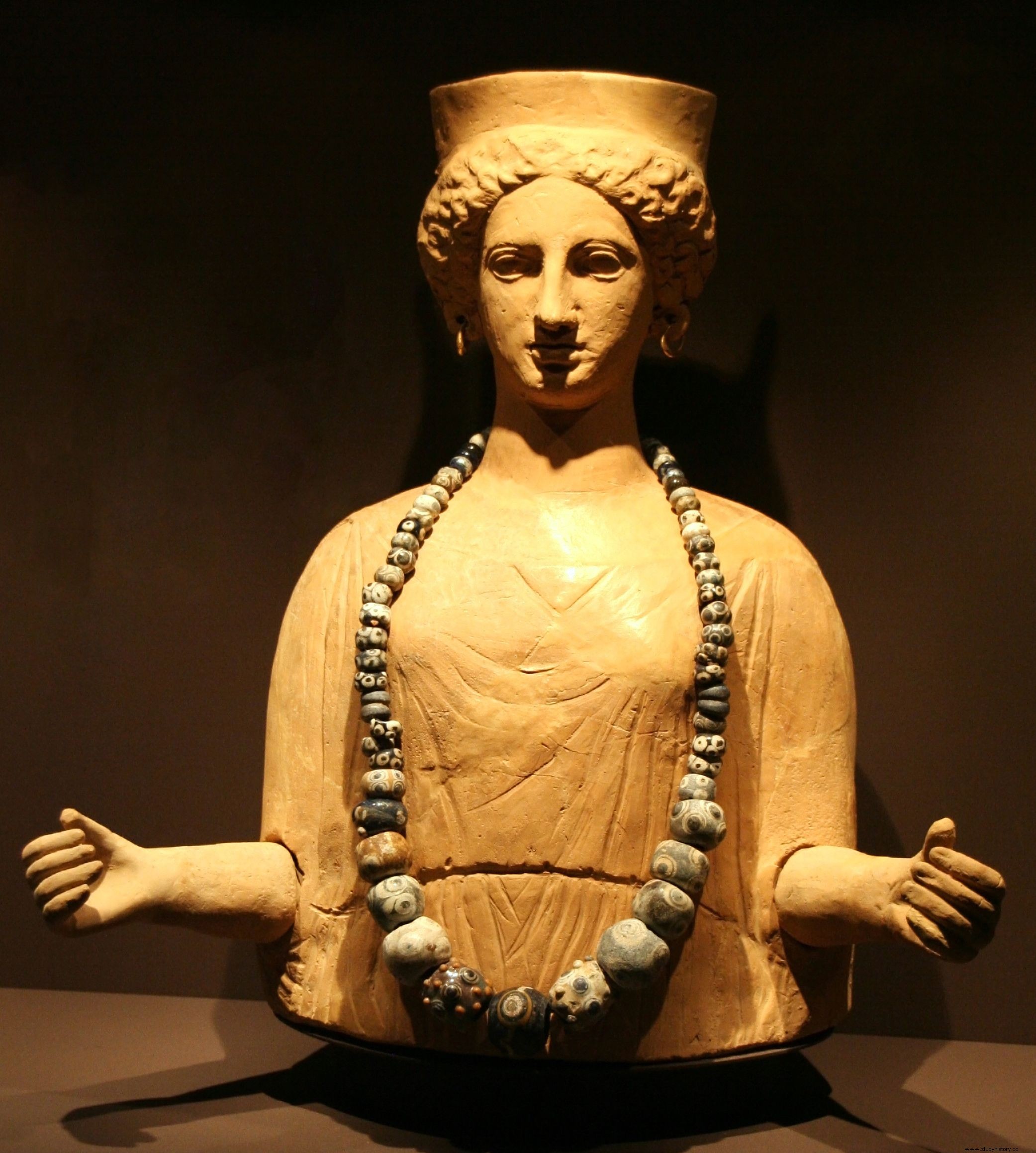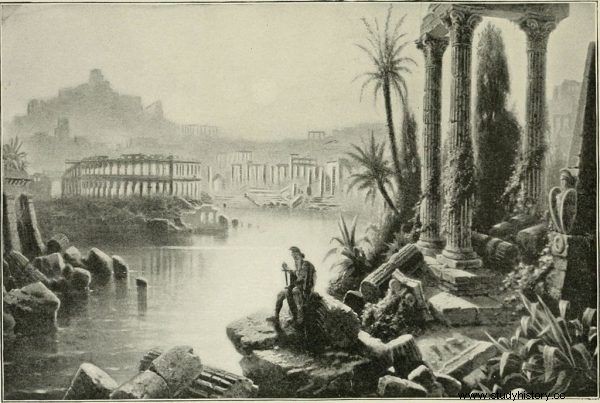The Greeks and Romans did not have many reasons to write well about Carthage. With so many wars fought, it is hardly surprising that they accused their rivals of the worst, not always taking the facts into account. But it looks like not all of the stories they give are pulled out of the finger.
“Such victims have saved Carthage before. Perhaps a suitable gift would satisfy Baal Hammon? " - says one of the heroes of Ben Kane's novel "Hannibal. The enemy of Rome. The second replies to him:
Unlike you, I wouldn't be able to kill someone's child to ask for a god. Nor could I ever sacrifice mine. Not like the others. Such a sacrifice is barbaric.

Are the mentions of Carthaginian child sacrifices merely rumors spread by hostile Greek and Roman historians?
Similar plots have been appearing for years in other historical novels, including the famous "Salambo" by Gustave Flaubert from 1862. Carthaginians do not enjoy good press. It can be suspected that a large part of the accusations against them are the result of Greek and Roman propaganda. Is child sacrifice just a rumor?
That's what Diodorus said
The cruel Punic practices were mentioned several times by the Greek historian and traveler Diodorus Siculus, who lived in the first century BC. One fragment of his description of Carthage is especially significant:
In the middle of the city stood a brown image of Kronos with outstretched arms and palms facing the ground, so that each child placed on them rolled down to a special pit filled with fire.
Why does the author mention Kronos, known from Greek mythology? The Greeks identified with this well-known Phoenician god Baal Hammon. It was one of the most important deities worshiped in Carthage, consort of the fertility goddess Tanit. He protected the inhabitants, guaranteed them prosperity and prosperity.

The ancients committed many atrocities. But were they willing to kill innocent children as well?
However, Diodorus was not born until several decades after the destruction of Carthage by the Romans. There already existed a Roman colony there. Meanwhile, the chronicler and politician Polybius, who lived in the 2nd century BC and remembered the wars with the Carthaginians, did not record similar practices.
They were also not mentioned by Titus Livius, the eulogist of Roman victories at the threshold of our era. After all, he even mentioned a special sacrifice of people in the Eternal City, made after the lost Battle of Cannae in 216 BC. The Romans then consecrated two pairs of foreigners to the gods - Greeks and Gauls. They buried them alive in the hope of reversing the fate of the Second Punic War.
Drums to drown out a lament
So was Diodorus fantasizing? Even so, he was not alone. Before him, the Greek Kletarchos, who lived in the 4th-3rd century BC, mentioned the sacrifices of the Carthaginians. This popular but controversial historian described the history of the conquests of Alexander of Macedon. It seems that the Sicilian just took his description from him - both are very similar.

One of the Carthaginian deities was the goddess Tanit. It was her spouse who allegedly made offerings from the youngest.
Interesting references to Carthaginian cruelty also appear in slightly later works. The first-century Roman writer, Pliny the Elder, described human sacrifice by rivals of the Eternal City. However, he wrote nothing about children. A similar account was made by the Greek historian Plutarch, who lived at the turn of the 1st and 2nd centuries. He noted that there was an incredible noise around the statue of the deity from the flutes and drums that drowned out the human lamentation. In addition, the Christian author from the turn of the 2nd and 3rd century, Minuciusz Felix, added that in the square you could hear the crying of frightened children that my parents tried to console.
However, one must take into account the possibility that all these authors drew from a "poisoned source." Cleytarchos could let his imagination run wild, his fantasies were unearthed by Diodorus, and all the rest followed him without thinking much.
Fire for Moloch
Therefore, it is worth looking for tips elsewhere as well. For example, records have survived that human sacrifice was practiced among the Canaanites. They inhabited the eastern Mediterranean coast, and thus the areas from which the founders of Carthage, the Phoenicians, came.

Carthaginians frequently appear in literature and movies. But what do we really know about them?
The Old Testament mentions the crimes of the people of Canaan. It is full of exhortations from Yahweh and the prophets to beware of such practices:
They also built a place of worship (...) and sacrificed their own sons and their own daughters there, which I never commanded them and never thought about (...);
Whoever of the sons of Israel or of the newcomers who settled in Israel gives one of their children to Moloch, will be put to death (...);
You will not give your child to be carried by fire for Moloch you will not thus desecrate the name of your God.
In these texts, of course, appears not Baal Hammon or his divine consort Tanit, but the mysterious Moloch. However, it is probably not the name of a specific deity, but only a misinterpreted term for a god ( melek ) or a sacrifice in fire ( molk ).

The history of the Carthaginian civilization destroyed by the Romans still holds many secrets.
However, this clue could still be challenged. After all, not all sources are reliable and can be read differently.
Prematurely Dead or Killed?
Archaeological finds turned out to be no less controversial. In Canaanite lands, remains that indicate child sacrifice have been found, for example, in Jericho. In turn, in the ruins of Carthage in 1921 urns with burnt remains of children mixed with the ashes of sacrificial animals were dug up. . Similar discoveries were made in Carthaginian cemeteries in Sicily and Sardinia.
It would seem that settles the matter, but even then the matter did not become obvious. Back in 2010, scientists from the University of Pittsburgh argued that the discovered burials are primarily the remains of children who were born still or died after birth. Then they were cremated.

It is the excavation that provides the most evidence regarding the sacrifice of children by the Carthaginians.
Researchers also indicated that even if live babies were sometimes sacrificed, it was rare and irregular. In their opinion, the belief in cruel habits of Carthaginians was still influenced mainly by a few dubious descriptions of ancient historians and quotations from the Old Testament.
This interpretation, favorable to the inhabitants of an African city, was questioned in 2013. A group of scientists led by Professor Josephine Quinn, an Oxford specialist in Phoenician culture, strongly opposed her in the Antiquity magazine. First of all, they pointed out that scientists in Pittsburgh overestimated the number of children born lifeless and died in infancy.
According to Quinn, the children's ashes were not mixed with the heads of the sacrificial animals by accident. The British professor also noted Carthaginian inscriptions. One of the tombstones shows a priest carrying a child who looks alive. The left inscriptions also say that the Carthaginians who made the sacrifice "heard the voice" of the gods, which means that this sacrifice was pleasing to the deities. "If you collect all the evidence - archeological, epigraphic and literary - it is overwhelming" - emphasized in one of the interviews the archaeologist.
We do not know if the Carthaginians always sacrificed their own children as an honor and a sacrifice for the greater good. Perhaps they secretly bought strangers, wanting to spare their children? The latter solution was advocated, among others, by Diodorus Siculus himself.
However, we can be sure that the whole story is not just the work of hostile propaganda. Thousands of children really died in the sacrificial hearths in Carthage. Several dozen or even a hundred annually, depending on how "crisis" the times were. We may never know the exact number.
So why is it so hard to believe? “We like to think that we have a lot in common with the ancients and that they were like us. But the truth is, I'm afraid they weren't, ”Professor Quinn said.
Inspiration:
The article was inspired by the latest book by Ben Kane, entitled Hannibal. Enemy of Rome , which was released by the Znak Horyzont publishing house.
